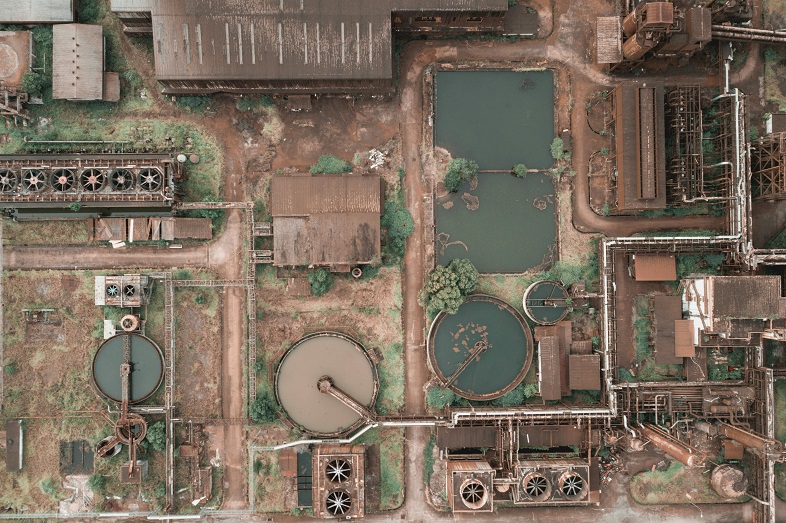Wastewater treatment is crucial for safeguarding the environment and human health by removing contaminants from used water before it’s released back into natural water bodies or reused. Two key parameters used to assess the quality of wastewater are Chemical Oxygen Demand (COD) and Biochemical Oxygen Demand (BOD).
Both of these parameters measure the amount of oxygen required to break down organic matter in water, but they do so in different ways and for different purposes. Understanding these parameters is essential for designing effective wastewater treatment processes.
What is Chemical Oxygen Demand (COD)?
Chemical Oxygen Demand (COD) is a measure of the total amount of oxygen required to chemically oxidize both organic and inorganic pollutants present in water. It is an indicator of the overall pollution load in wastewater, as it includes substances that are not readily biodegradable, such as industrial chemicals, detergents, and other synthetic pollutants.
Key Points about COD:
• Method of Measurement: COD is measured by adding a strong oxidizing agent, usually potassium dichromate (K₂Cr₂O₇), to a sample of wastewater and then heating it under acidic conditions. The amount of oxygen consumed by the reaction is quantified, usually in milligrams per liter (mg/L).
• Range: COD values can range from a few milligrams per liter for relatively clean water to several thousand milligrams per liter for heavily polluted industrial effluents.
• What It Tells Us: COD gives a general idea of the total pollution load, including both biodegradable and non-biodegradable substances. It is often used to assess the effectiveness of treatment processes, particularly when there is a large amount of non-biodegradable matter in the wastewater.
What is Biochemical Oxygen Demand (BOD)?
Biochemical Oxygen Demand (BOD) refers to the amount of oxygen required by microorganisms (usually bacteria) to break down organic matter in the water over a specified period (typically 5 days, known as BOD₅). Unlike COD, BOD only measures the oxygen required to degrade biodegradable organic substances, not the total pollution load. BOD is an important parameter for understanding the impact of wastewater on the dissolved oxygen levels of receiving water bodies, which can affect aquatic life.
Key Points about BOD:
• Method of Measurement: BOD is determined by incubating a sample of wastewater at a controlled temperature (usually 20°C) for 5 days in the dark to prevent photosynthetic oxygen production. The amount of oxygen consumed by microorganisms during this period is measured.
• Range: BOD values typically range from 0 mg/L for very clean water to several hundred milligrams per liter for highly polluted water.
• What It Tells Us: BOD is a key indicator of the biodegradable organic material present in wastewater. A higher BOD means that more oxygen is required by microorganisms to decompose the organic matter, which can lead to oxygen depletion in water bodies, harming aquatic ecosystems.
| COD vs. BOD: Key Differences | ||
| Although both COD and BOD are measures of oxygen demand in water, they differ in several important ways: | ||
| Feature | Chemical Oxygen Demand (COD) | Biochemical Oxygen Demand (BOD) |
| Measurement | Total oxygen demand (both biodegradable and non-biodegradable pollutants) | Oxygen demand for biodegradable organic matter only |
| Timeframe | Measured over a short time (usually 2-3 hours) | Measured over a longer period (typically 5 days) |
| Applicability | Indicates overall pollution, including industrial chemicals and non-biodegradable substances | Focuses on organic matter that can be biologically decomposed |
| Oxidizing Agent | Uses a strong chemical oxidizing agent (e.g., potassium dichromate) | Involves microbial degradation of organic matter |
| Speed of Test | Faster (several hours) | Slower (5 days for standard BOD₅ test) |
The Role of COD and BOD in Wastewater Treatment
Both COD and BOD are essential in monitoring the effectiveness of wastewater treatment plants (WWTPs). Here’s how they help:
1. Designing Treatment Systems: By knowing the COD and BOD values, engineers can design appropriate treatment processes. For example, high COD suggests the need for advanced treatment technologies like chemical oxidation or adsorption, while high BOD indicates that biological treatment (e.g., activated sludge or trickling filters) will be more effective.
2. Evaluating Treatment Efficiency: A significant reduction in COD and BOD after treatment indicates that the treatment system is functioning properly. If these values remain high after treatment, it suggests that the system needs adjustment or more advanced treatment options.
3. Environmental Impact Assessment: The COD and BOD levels of effluent are important factors when determining how wastewater will impact receiving water bodies. Excessive organic pollutants (high BOD) can lead to oxygen depletion in rivers or lakes, endangering aquatic life.
4. Regulatory Compliance: Many regulatory agencies set limits for COD and BOD concentrations in discharged wastewater. Compliance with these limits is critical for maintaining environmental standards and avoiding penalties.
Conclusion
COD and BOD are both crucial parameters for assessing the quality of wastewater and the efficiency of treatment processes. While COD gives a broad view of all pollutants, including non-biodegradable substances, BOD provides insight into the biodegradable portion that poses a direct threat to aquatic life. Together, they help ensure that wastewater treatment systems are designed effectively, function properly, and meet regulatory standards, ultimately protecting the environment and public health.


Leave a Reply